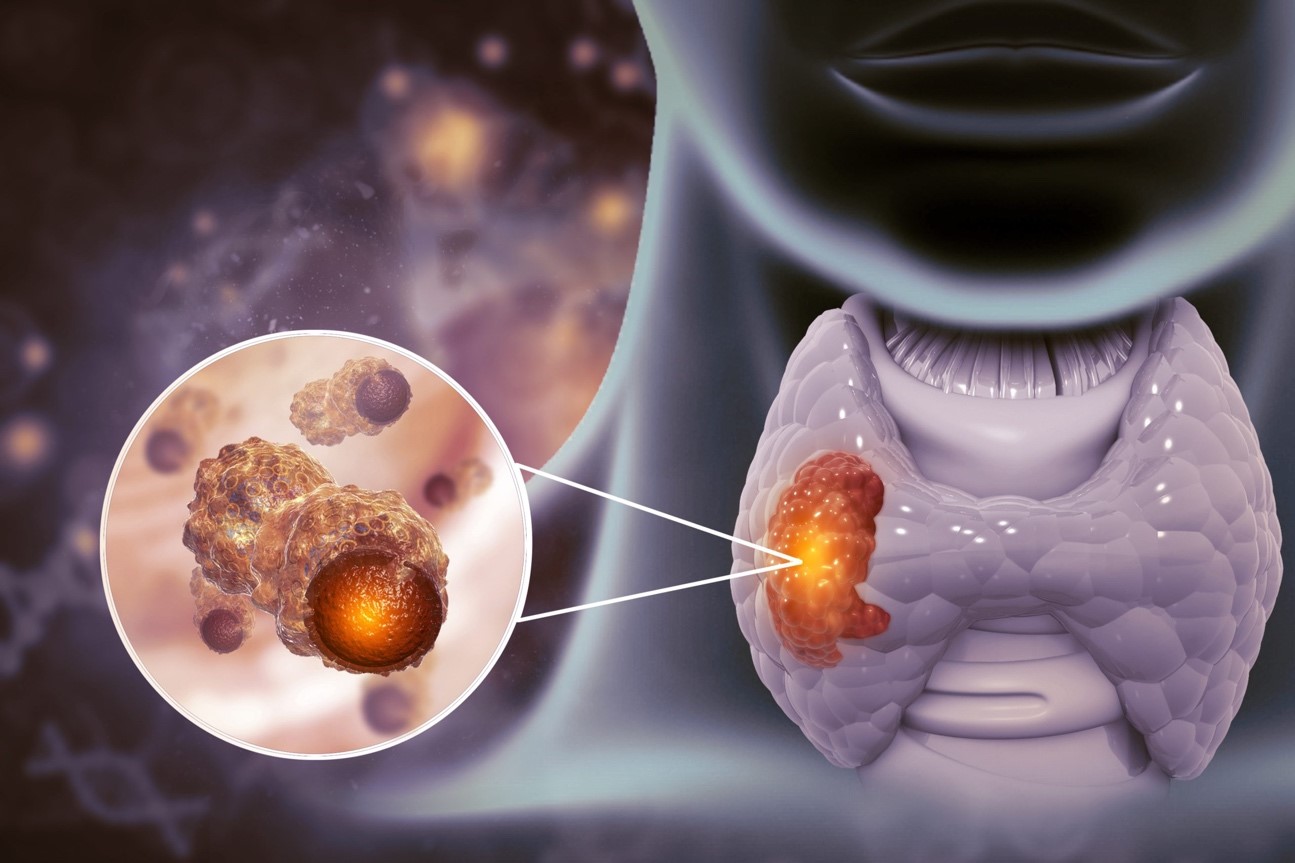Women's Health
Ovarian Cancer: Symptoms, Diagnosis & Treatment

Ovarian cancer refers to the growth of malignant cells inside or on the outer layer of one or both ovaries. If left untreated, the cancerous cells can metastasize and spread to other parts of your body.
The primary function of ovaries is to produce eggs or ova as well as female hormones progesterone and estrogen. In most cases, ovarian cancer starts from the surface of the ovary, before spreading to other parts of the ovary and body.
According to the Singapore Cancer Registry, Interim Annual Report 2010-2014, ovarian cancer affects approximately 12.8 women per 100,000 and this figure is on the rise. The same report shows that this disease is the 5th most common female cancer that affects Singaporean women. At least 359 new cases of ovarian cancer are diagnosed every year in Singapore.
Risk Factors For Ovarian Cancer
While all women are at risk of developing ovarian cancer, several factors may increase your chances of being diagnosed with the disease. However, it does not mean that having a risk factor will automatically cause you to develop ovarian cancer. Here are some of the leading risk factors for ovarian cancer:
Age
Your risk of developing ovarian cancer increases with age. Most cases of ovarian cancer are reported among women who are past their menopause. In fact, almost half of all ovarian cancers develop in women who are above 50 years old.
Personal History Of Breast Or Colorectal Cancer
Women who have been diagnosed with any of these cancers are at a higher risk of developing ovarian cancer.
Family History
You are at an increased risk of developing ovarian cancer if your first-degree relative, such as mother, sister or grandmother is diagnosed with it. Family history of rectal, colon, breast, uterine, and colon cancer may also increase your risk of developing ovarian cancer.
Genetic Mutation
Another significant risk factor is a hereditary genetic mutation that occurs either as BRCA1 (breast cancer gene 1) or BRCA 2 (breast cancer gene 2).
These two gene mutations account for approximately 10 to 15% of all ovarian cancers. The inherited syndrome referred to as nonpolyposis colorectal cancer (HNPCC) or Lynch Syndrome is another genetic link to this type of cancer.
Lynch Syndrome is characterized by an increased risk of cancers of the gynecologic tract, digestive tract, and other body organs.
Reproductive History & Infertility
There is a strong relationship between reproduction and the risk of developing ovarian cancer. Typically, women who started menstruating before the age of 12 and those who have not given birth to any children are at an increased risk of developing this condition.
Being infertile may also increase your risk of developing this type of cancer, regardless of whether or not you use fertility drugs.
Hormone Therapy After Menopause
Women who use estrogens after menopause have an increased risk of being diagnosed with ovarian cancer. The risk is even higher in women who opt to take estrogen alone without progesterone.
Warning Signs Of Ovarian Cancer
Ovarian cancer rarely causes visible symptoms in its early stages. However, advanced-stage ovarian cancer will cause a few signs that can easily be mistaken for other illnesses. The most common symptoms include:
- Bloating.
- Swelling of the abdomen.
- Rapid or unexplained weight loss.
- Sudden change in bowel habits.
- Sudden changes in menstruation cycle.
- Severe pelvic or abdominal pain.
- Back pain or pain in the legs.
- Urinary symptoms such as an increased need to urinate more often or more urgently than normal
These warning signs can be caused by a wide range of other health problems and may not be a sign of the presence of ovarian cancer. However, if any of these signs persists or bothers you, you should consider consulting an experienced Gynaecologist for screening.
Latest Articles
How Are Abdominal Hernias Treated?
What to Expect from Colorectal Surgery
How to Treat Breast Inflammatory Conditions
Gynaecomastia: Understanding Male Breast Cancer
Diagnosis Of Ovarian Cancer
Treatment outcome is much better with management of ovarian cancer upon diagnosis in early stages. Unfortunately, ovarian cancer is not easily detectable.
Performing a pelvic exam will help the gynaecologist detect unusual changes in your ovaries, uterus, vagina, or vulva. Apart from the pelvic examination, the following screening tests may also be conducted:
Internal Ultrasound Scan
A transvaginal ultrasound, commonly referred to an internal ultrasound scan, uses echoes from sound waves to create a clear picture of your uterus and ovaries on a computer screen. During a transvaginal ultrasound, your doctor inserts a small transducer into your vagina.
The transducer is covered with a gel and disposable plastic sheath to make it easier to insert. If you are uncomfortable with this procedure, you can request your doctor to perform an external ultrasound scan where the probe is positioned next to your stomach.
This is always the first test to be performed whenever your doctor suspects that there is a problem with your uterus or ovaries.
CA-125 Blood Test
This test measures the amount of a specific protein known as CA-125 in your blood. Women who have developed ovarian cancer tend to have high levels of CA-125. However, higher levels of CA-125 is not always a symptom of ovarian cancer. Other medical conditions, such as appendicitis and endometriosis, can also cause increased levels of CA-125 protein.
CT Scan/MRI Scan
A magnetic resonance imaging (MRI) or computed tomography (CT) scan can be used to take clear images of the inside of your body. Images of your chest, pelvis, and abdomen will be taken to scan for any sign of cancer in your body.
A CT/MRI scan may not be able to detect all ovarian tumours, but it is useful in establishing the growth of cancerous cells in your body.
Surgery/Biopsy
Biopsy involves removing a small sample of tissue from your ovary and analyzing it under a microscope. This is the definitive way that your gynaecologist can determine if you have developed ovarian cancer.
Ovarian Cancer Treatment
The treatment of ovarian cancer usually depends on how far the cancerous cells have spread in your body and your general health. In most cases, doctors use a combination of surgery and chemotherapy to treat ovarian cancer.
The primary aim of treatment is to cure your cancer. However, if the tumour has become too advanced to be cured, your treatment regime will aim to relieve the symptoms and control the growth of tumours for as long as possible.
Surgery
Surgery is the primary treatment option for ovarian cancer. The main aim of surgery is to get rid of all the cancerous cells from your body or as much of it as possible. In most cases, the extent of surgery depends on the stage of cancer.
This process usually involves removing your ovaries along with the fallopian tubes, womb, or a layer of fatty tissue in your tummy.
If the cancer is only on your ovaries and has not spread, your doctor will only remove the ovaries leaving your womb intact. Surgery that is done to remove your ovaries and fallopian tubes is referred to as salpingo-oophorectomy.
Hysterectomy involves the removal of your uterus and the surrounding tissue. If the cancer has spread beyond your pelvic area, the oncologist will try to reduce as much cancerous tissue as possible through cytoreductive surgery.
Chemotherapy
Chemotherapy refers to the use of drugs to treat ovarian cancer. Ordinarily, chemotherapy is performed as a follow-up treatment to kill any cancer cells that remain in your body after surgery.
The procedure can also be performed before surgery to shrink the cancerous cells and make it easier to get rid of them. The chemo drugs are administered as a drip into your vein, and you will need to go to the hospital to receive treatment.
Treatment is given in cycles. Every treatment period is followed by a resting period to allow your body time to recover. Most patients have six cycles of chemotherapy. Each cycle lasts for up to three weeks. Chemotherapy may cause side effects such as hair loss, tiredness, loss of appetite, and diarrhea.
Hormone Therapy
Sometimes, hormone therapy may be added to your ovarian cancer treatment plan to prevent estrogen from reaching the cancerous cells. Cutting off the supply of this essential hormone is able to slow down the cancer cell growth.
WHO WE ARE
About SOG Health Pte. Ltd.
Established in 2011, SOG Health Pte. Ltd. (“SOG”) is a leading healthcare service provider dedicated to delivering holistic health and wellness services to the modern family.
With a long and established track record in Singapore providing Obstetrics and Gynaecology (“O&G”) services such as pre-pregnancy counselling, delivery, pregnancy and post-delivery care, the Group has since further expanded its spectrum of healthcare services to include Paediatrics, Dermatology, and Cancer-related General Surgery (Colorectal, Breast & Thyroid).
The Group’s clinics, under its four operating segments of O&G, Paediatrics, Oncology and Dermatology, are strategically located throughout Singapore to provide easy access to its patients.
- Obstetrics
- Gynaecology
- GynaeOncology
- Breast, Thyroid & General Surgery
- Colorectal, Endoscopy & General Surgery
- Dermatology
- Paediatrics
Consult With A Specialist From SOG
Visit one of our specialists today to learn more about your health!
Recommended GynaeOncologist
Book An Appointment
Fill up this form and our clinic will get back to you shortly.
For general enquiries, please click here.




